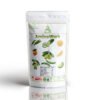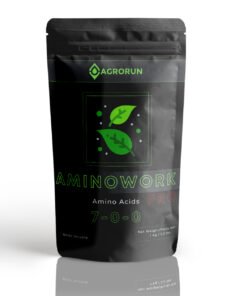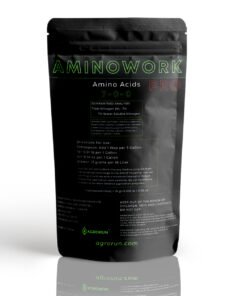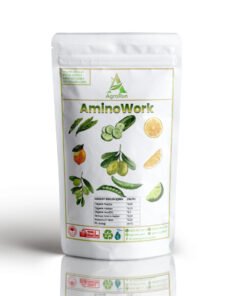TerraBora; It is a 100% organic fertilizer with its macro and micro elements, developed to improve the structure of the soil, strengthen the plant and increase soil and product productivity.
|
w/w(%) | |
| Organic Matter | % 40 | |
| Organic Carbon | % 17 | |
| Organic Nitrogen | % 2,5 | |
| Free Amino Acids | % 6 | |
| pH | 5 | |
TerraBora; Thanks to its physical and chemical properties, it attracts and traps toxic substances within its own body. TerraBora; It transfers the nutrients contained in it to the soil, increases the mineral contents in the soil and creates nutrients within the plant.
TerraBora contains a broad spectrum of blended minerals. These include Silicon, various electrolytes, trace minerals and other essential nutrients.
TerraBora Plus, a wide spectrum of minerals include the following elements; ( all in organic form )
| Barium | Nickel | Magnesium | Iron | Cadmium | Calcium | Sodium |
| Silicon | Dysprosium | Lanthanum | Bromine | Beryllium | Thallium | Ytterbium |
| Tellurium | Thulium | Titanium | Rubidium | Zinc | Selenium | Potassium |
| Copper | Vanadium | Gallium | Lithium | Sulphur | Boron | Samarium |
| Niobium | Molybdenum | Thorium | Bismuth | Iodine | Phosphorous | Scandium |
| Gadolinium | Hafnium | Aluminum | Holmium | Strontium | Rhenium | Neodymium |
| Fluorine | Erbium | Germanium | Manganese | Zirconium |
- Increases plant growth and crop yields.
- Increases nutrient content within produce.
- Increases Mycorrhizae* population in soil.
- Strengthen plant stalks.
- Reduces fungal growth.
- Increases diseases resistance within plants.
- Replenishes minerals depleted soils caused by over-farming.
- Converts conventional farmlands to organic farmlands rapidly.
- Reduces phosphate and chemical runoff into streams and lakes.
- Increases taste and flavour of the fruits and vegetables.
- Makes unusable but useful substances available for the plants.
- Detoxify contaminated soils.
- Speed up decompositions of minerals.
- Restore structure of the soils.
- Economise water and air.
- Increases ion exchange capacity.
- Increases buffering capacity of the soils.
- Increases numbers of useful microorganisms in soils by restoring and reconditioning the soil.
- Prevents leaching of chemical residues by absorption herbicides so that reduces toxins runoff into streams.
*Mycorrhizae – “The word ‘Mycorrhiza’ is given to a mutualistic association between a fungus (Myco) and the roots (rhiza) of the plants. This association is symbiotic because the relationship is advantageous for both organisms. The macrosymbiont (the plant) gains increased exploration of the soil (rhizo sphere) with the intricate net of hyphae [branching filaments of a fungus] that increases the uptake of water and nutrients from the soil interphase. The microsymbiont (the fungus) uses the carbon provided by the plant for its physiological functions, growth and development.
When & How to apply ?
- Following harvest,
- In the winter season in greenhouses,
- Right before planting or seeding,
- Right after planting or seeding,
- At such special occasions when the plant is required to be nourished strongly,
- Whenever diseases are observed,
- Whenever harmful mold and fungi are observed,
- When any stress is observed on the plant,
- In the over irrigated agricultural lands,
- Agricultural lands with acidic characteristics,
- For agricultural land weak in organic colloids,
- Agricultural lands with high level of toxicity caused by chemical fertilizers and pesticide residues.
Physical Mechanism of TerraBora in Plants
•Cuticle – Provides silicon double layer formation.
• It provides hardening and strengthening of the cell wall.
Biochemical Mechanism of TerraBora in Plants
•Accelerates the activity of enzymes responsible for defense.
• It provides the formation of an anti-microbial structure.
•It regulates the intra-system communication.
Molecular Mechanism of TerraBora in Plants
At the point of protection of the plant; Promotes the synthesis of hormones and anti-microbial structures.:







